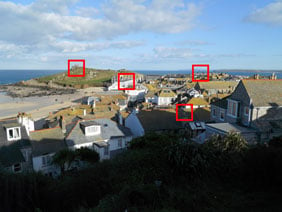Nikon COOLPIX S570
-
-
Written by Gordon Laing
Nikon COOLPIX S570 vs Canon IXUS 120 IS / SD940 IS vs IXUS 200 IS / SD980 IS Real-life resolution
Nikon COOLPIX S570 |
Canon IXUS 120 IS / SD940 IS |
Canon IXUS 200 IS / SD980 IS | ||
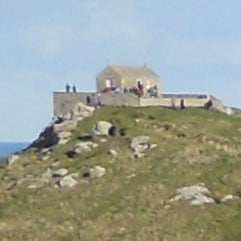 | 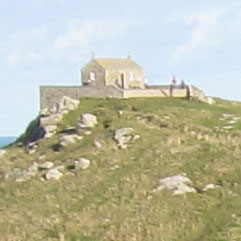 | 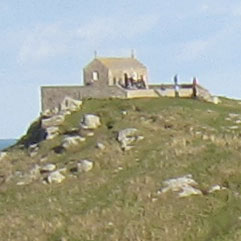 | ||
f5.4, 80 ISO |
f8, 80 ISO |
f4, 80 ISO | ||
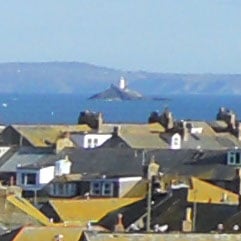 | 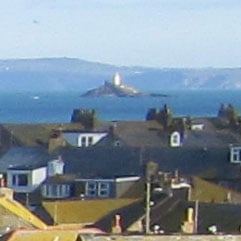 | 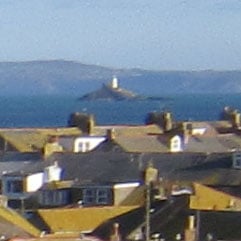 | ||
f5.4, 80 ISO |
f8, 80 ISO |
f4, 80 ISO | ||
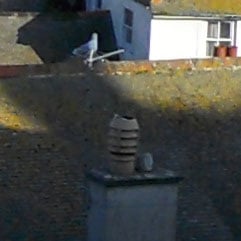 | 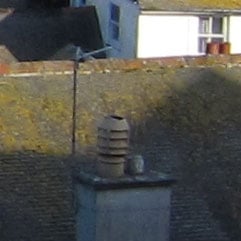 | 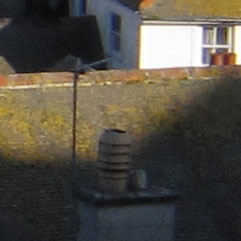 | ||
f5.4, 80 ISO |
f8, 80 ISO |
f4, 80 ISO | ||
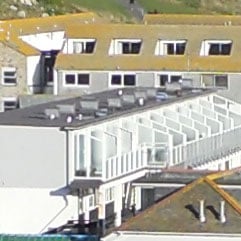 | 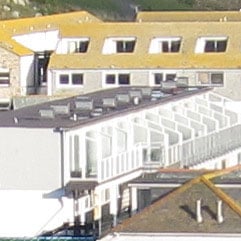 | 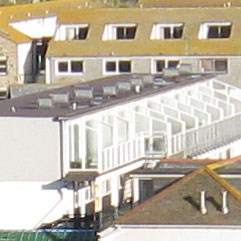 | ||
f5.4, 80 ISO |
f8, 80 ISO |
f4, 80 ISO | ||
The above image was taken with the Nikon COOLPIX S570 set to 80 ISO. The lens was set to 5mm and the evaluative metering selected an exposure of 1/250 of a second at f5.4. The original 4000×3000 pixel image had a file size of 4.7MB. Overall the result from the COOLPIX S570 is very good. This landscape makes for quite a tricky subject exposure-wise with the low sun striking the white walls of buildings and throwing the foreground vegetation into deep shadow. The COOLPIX auto mode metering has got the exposure pretty much spot on, ensuring good tonal detail in the highlight areas – the clouds and white walls – as well as in the shadows. Colours are well saturated and the auto white balance has done a good job with the morning sunlight, the white walls are white and there’s no discernable colour cast. Turning to the crops, the first one showing the chapel on the hill might give cause for concern – the crosses on the roof aren’t very well defined and the detail in the hill with the path running diagonally down from left to right looks a little muddy. But there’s no evidence of similar loss of detail in the other crops. Typically, you’d expect a fall in resolution towards the edge of the image, but if you look at the crop with the lighthouse this isn’t the case; if anything, the detail here is better than it is in the first crop from a more central part of the image. Moving down, the third crop doesn’t tell us much, other than the COOLPIX S570 has done a good job of recording detail in the shadows and the final crop, again from a central area of the image shows excellent fine image detail. Colour fringing caused by chromatic aberration is nowhere in evidence, which is not to say it’s been eliminated from the COOLPIX S570’s lens, but it’s not going to be a problem in most situations. Comparing the image quality of the Nikon COOLPIX S570 with both the Canon IXUS 120 IS / SD940 IS and the IXUS 200 IS / SD980 IS reveals there’s little to tell the three cameras apart. The crops are different, but not in a way that leads us to conclude any one of them has the edge in terms of image quality. For each marginal flaw evident in one area, you’ll find compensating strengths in others. The COOLPIX chapel crop is worse than that from either IXUS, but the lighthouse and apartment balconies are better. These are very marginal differences to begin with and rather than adding up to a significant advantage, they simply cancel each other out. There are many ways you can differentiate these cameras, but it seems that image quality isn’t one of them. Now head over to our Nikon COOLPIX S570 Noise results to see how it compares in terms of high sensitivities. |

